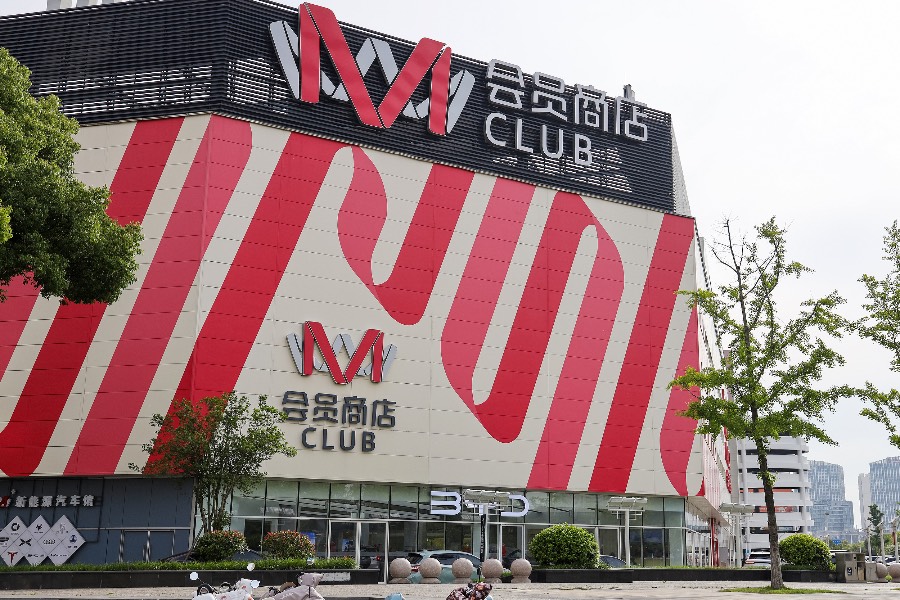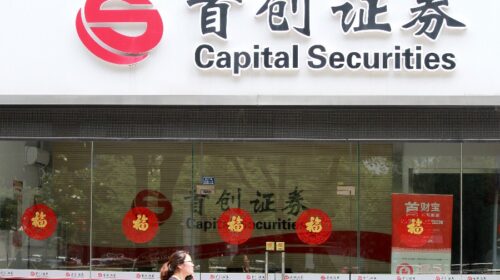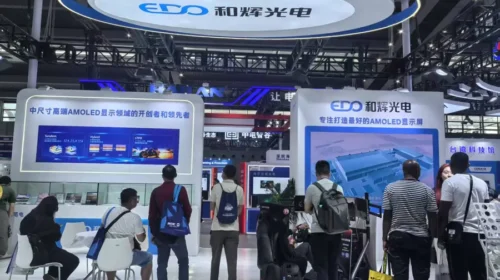From grocery giant to produce pauper: Can Sun Art turn the aisle?

The operator of the formerly popular RT-Mart chain has lost money in two of the last three years, as a big-name private equity investor tries to turn it around
Key Takeaways:
- Sun Art warned it expects to report a net loss of 140 million yuan for the first half of its latest fiscal year through September
- The supermarket operator has initiated sweeping organizational and personnel restructuring as it tries to work its way back to profitability
Lau Chi Hang
“I bested every rival but got beaten by the times. And when the times discard you, they don’t even bother saying goodbye,” mused Huang Ming-Tuan, former chairman of Sun Art Retail Group Ltd. (6808.HK), years ago. Those words were quite prescient, foreshadowing today’s grim reality for traditional hypermarkets where Sun Art’s RT-Mart chain was once a leader of the pack.
The rise of e-commerce has made the operational model championed by these large-format retailers largely obsolete. Testifying to that shift, former category leader Carrefour (CA.PA) had only four stores remaining in China by the end of last year, leaving the chain far from where it sat in days when it was king of the Chinese grocery cart. Walmart (WMT.US) has also shuttered over 20 big-box outlets domestically in the same timeframe, as it focuses instead on its Sam’s Club warehouse-style outlets.
Victim of shifting times
Structural upheavals across brick-and-mortar big-box retailing, combined with its own internal weaknesses, collectively led to RT-Mart’s decline – toppling what was once China’s reigning market titan with billions of yuan in annual revenue. In the latest sign that any turnaround is still very much a work in progress, Sun Art warned last week that it expects to report a loss of 140 million yuan ($14 million) for the six months through September 2025, the first half of its fiscal year, reversing a profit of 206 million yuan a year earlier.
Management attributed the latest losses to intensified price competition against a backdrop of weak consumer demand, which squeezed its average selling prices. Other non-recurring factors included declining income from tenants within its shops, transformation expenses related to structural reorganization in its Central China regional hub, and a reduction in financial asset yields.
In its peak years, Sun Art delivered topline results exceeding 100 billion yuan in annual revenue, netting earnings up to 3 billion yuan in 2017 alone. But its competitive edge diminished with the rise of e-commerce. The company started losing money as customers abandoned its once-bustling supermarkets, culminating with a loss of 730 million yuan in its 2022 fiscal year. It rebounded with a small profit of 78 million yuan the next fiscal year, but then fell massively into the red in fiscal 2024 with a 1.6 billion yuan loss.
While it managed to climb back into the black in its latest fiscal year through March 2025 with a profit of 386 million yuan, investors aren’t cheering just yet. The temporary return to profitability was less based on organic fundamental strength and owed more to severe steps, including the shuttering of eight hypermarkets and one mid-market outlet, paired with aggressive cost-containment.
PE giant to the rescue
Sun Art was previously owned by e-commerce giant Alibaba, which gradually built up a 70% controlling stake in the company between 2017 through 2020, investing a total of HK$50.2 billion ($6.46 billion). Yet despite Alibaba’s massive resources and attempts to fold the chain into its “new retail” concept combining traditional and online channels, RT-Mart continued to be undermined by the rise of online shopping. Alibaba ultimately capitulated by selling its stake to private equity firm DCP Capital for HK$13.14 billion and booking a loss of HK$37.1 billion.
So, what does DCP Capital bring to the table to stabilize such a sinking asset? The company was set up in 2017 by private equity veteran Liu Haifeng, whose previous employers included powerhouses KKR and Morgan Stanley. Liu’s resume includes work with home appliance giant Haier, insurer Ping An and dairy heavyweight Mengniu, among others. But tackling Sun Art following the Alibaba fire sale represented one of his biggest challenges to date.
Radical overhaul underway
DCP Capital immediately launched a sweeping overhaul after taking over Sun Art. It slashed costs by restructuring the company’s five operating regions into four and then launched a massive closure campaign to shutter persistent money-losers to stem the cash bleeding.
Then it overhauled the company’s management and staff, including forcing Huang Ming-Tuan’s resignation as chairman, and the departure of many other executives. DCP also launched an anti-corruption campaign. Last month, RT-Mart’s Chief Operating Officer Guan Mingwu was taken away by public security officials, and the company later said he was suspected of job-related crimes in an investigation that is still in progress.
To address its declining revenue, the company redirected its resources to midsize supermarkets under its newer superstore and M-club membership formats. In fiscal 2025, the company opened four superstores, targeting community needs with 5,000 to 8,000 product varieties per store. Such stores range from 1,500 square meters to 3,000 square meters, with some featuring cafeterias or children’s play areas.
The M-club stores use a similar model to Sam’s Club with warehouse-style shopping and less product variety, aimed at attracting customers with high value-for-money and private-label products. In fiscal 2025, Sun Art opened four M-clubs.
The overhaul seems to be addressing a number of important points, including the closing of loss-making stores to reduce expenses and free up resources, which can instead be used for the more promising superstores and M-club formats. Warehouse membership retailing is currently a hot ticket in China, as reflected by the local success of Sam’s Club and Costco (COST.US), meaning Sun Art still has a chance to capture a slice of the market despite its latecomer status.
That said, Sam’s Club and Costco have established themselves as leaders in the format, boasting store networks, brand recognition and supply chains that are far more advanced than Sun Art’s. For it to catch, Sun Art will need to not only rebuild its reputation as a premier brick-and-mortar grocer, but also invest substantial capital – things that won’t happen overnight.
To subscribe to Bamboo Works weekly free newsletter, click here





